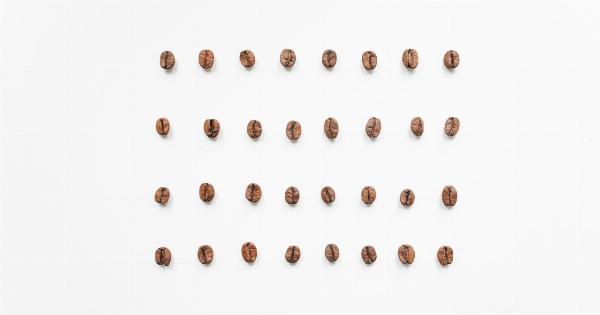Biliary cirrhosis, also known as primary biliary cirrhosis (PBC), is a chronic liver disease that primarily affects the small bile ducts within the liver.
This condition gradually impairs the liver’s ability to function properly, leading to various complications and a decline in overall health. In this article, we will explore the causes, symptoms, diagnosis, and treatment options for biliary cirrhosis, while also delving into how it affects liver function.
1. What is Biliary Cirrhosis?
Biliary cirrhosis is an autoimmune disease in which the body’s immune system mistakenly attacks the bile ducts within the liver. These bile ducts play a crucial role in transporting bile, a digestive fluid, to the gallbladder and small intestine.
Over time, the continuous inflammation and damage to the bile ducts cause scarring, leading to liver cirrhosis.
2. Causes of Biliary Cirrhosis
The exact cause of biliary cirrhosis remains unknown, but experts believe that it is influenced by a combination of genetic and environmental factors. Some potential risk factors for developing this condition include:.
- Family history of biliary cirrhosis or other autoimmune diseases
- Gender (PBC is more common among women)
- Age (usually diagnosed between 40 and 60 years old)
- Genetic predisposition
- Exposure to certain infections or toxins
3. Symptoms of Biliary Cirrhosis
The early stages of biliary cirrhosis may be asymptomatic or exhibit vague symptoms, which can make diagnosis challenging. However, as the disease progresses, the following signs and symptoms may become noticeable:.
- Fatigue and weakness
- Itchy skin (pruritus)
- Yellowing of the skin and eyes (jaundice)
- Dry eyes and mouth
- Abdominal pain and discomfort
- Swelling in the legs and ankles (edema)
- Dark urine
- Pale or greasy stools
- Cholesterol imbalances
- Osteoporosis
- Easy bruising or bleeding
4. Impact on Liver Function
As biliary cirrhosis progresses, the liver’s function deteriorates, affecting various important processes within the body:.
4.1 Impaired Bile Production
The primary role of the liver is to produce bile, a substance that aids in the digestion and absorption of dietary fats. In biliary cirrhosis, the scarring of the bile ducts disrupts the flow of bile, leading to reduced bile production.
This impairment can result in difficulties digesting and absorbing fats, causing symptoms such as diarrhea, malabsorption of nutrients, and deficiencies in fat-soluble vitamins.
4.2 Toxic Buildup
The liver is responsible for filtering toxins and waste products from the blood. In the case of biliary cirrhosis, the compromised liver function impairs its ability to remove toxins effectively.
This can lead to a buildup of harmful substances in the bloodstream, contributing to an increased risk of infections, altered mental state, and potential organ damage.
4.3 Decreased Protein Synthesis
The liver plays a vital role in synthesizing proteins, including clotting factors that are essential for proper blood coagulation. However, as biliary cirrhosis progresses, the liver’s ability to produce these essential proteins diminishes.
Consequently, individuals with advanced biliary cirrhosis may experience an increased risk of bleeding and bruising, as well as difficulty healing wounds.
4.4 Portal Hypertension
Portal hypertension refers to elevated blood pressure within the portal vein system, which carries blood from the intestines to the liver.
In biliary cirrhosis, scarring causes resistance to blood flow within the liver, leading to increased pressure in this portal vein system. This can result in the development of collateral blood vessels in the esophagus, stomach, and intestines, which are prone to rupture, causing potentially life-threatening bleeding.
4.5 Liver Failure
If biliary cirrhosis goes untreated or progresses to an advanced stage, it can eventually lead to liver failure. Liver failure occurs when the liver is no longer able to perform its critical functions, such as detoxification, metabolism, and synthesis.
This can have severe consequences on overall health and may necessitate a liver transplant as the only viable treatment option for some patients.
5. Diagnosis of Biliary Cirrhosis
Diagnosing biliary cirrhosis usually involves a combination of medical history evaluation, physical examination, blood tests, imaging studies, and liver biopsies.
Some common diagnostic tests include liver function tests, tests for autoantibodies, ultrasound, Magnetic Resonance Cholangiopancreatography (MRCP), and liver biopsy.
6. Treatment Options and Management
While there is currently no cure for biliary cirrhosis, various treatment approaches can help manage the symptoms, slow disease progression, and improve quality of life. Treatment options may include:.
- Ursodeoxycholic acid (UDCA): This medication can help slow down the progression of biliary cirrhosis and manage symptoms.
- Itch-relieving Medications: Medications such as antihistamines and bile acid sequestrants can alleviate the itchiness associated with the condition.
- Vitamin and Mineral Supplements: Addressing nutritional deficiencies, such as vitamins A, D, E, K, and calcium, may be necessary.
- Treatment of Complications: Additional interventions may be required to manage complications such as osteoporosis, portal hypertension, or liver failure.
- Liver Transplant: In advanced cases of biliary cirrhosis, liver transplantation may be the only viable treatment option.
7. Conclusion
Biliary cirrhosis is a chronic liver disease that significantly impairs liver function over time.
Understanding the impact of this condition on liver function is crucial in order to facilitate early diagnosis, appropriate management, and prevent complications. If you or someone you know experiences any symptoms associated with biliary cirrhosis, it is recommended to seek medical attention promptly for proper evaluation and treatment.






























